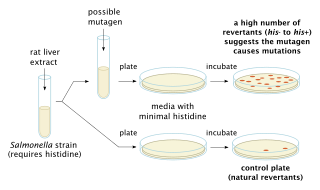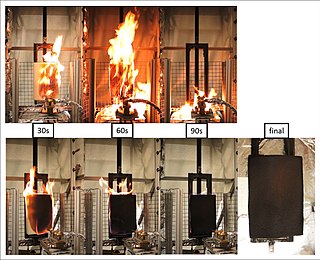Silent Spring Institute is a nonprofit organization dedicated to studying and reporting primarily on breast cancer prevention, although its research covers other health-related topics as well.
Silent Spring Institute is a nonprofit organization dedicated to studying and reporting primarily on breast cancer prevention, although its research covers other health-related topics as well.
The nonprofit [1] organization was founded in 1994 "as an outgrowth of the Massachusetts Breast Cancer Coalition." [2] It engages in research on the links between risk of breast cancer and exposure to chemicals found in everyday products. [3] Its scientific team does field testing on Cape Cod and collaborates with private and academic laboratories. [2] In 2014 the Cape Cod Times recalled that: [2]
From the start, Silent Spring Institute researchers were interested in whether environmental toxins were having a particular influence on the Cape's drinking water, which is served by a sole source aquifer and leaches through sandy soil that in theory allows wastewater – and contaminants – to drain into the water supply more quickly than through other types of soil. Silent Spring researchers have tested water in public and private wells for the presence of chemicals known as emerging contaminants and have visited scores of Cape homes to measure for the presence of hormone-disrupting chemicals.
Based in Newton, Massachusetts,[ citation needed ] the institute was named in honor of environmentalist Rachel Carson, who died of breast cancer. [4]
The only independent research institute dedicated to studying breast cancer prevention, Silent Spring Institute has established a reputation for exemplary research. [5] [6] In keeping with Silent Spring's commitment to collaboration between scientists and activists, researchers report individual exposure results to all individuals and communities participating in its studies. It has become a pioneer in developing ethical methods for communicating results when the health implications are uncertain. [7] In 2000, Silent Spring's research was honored with a U.S. Environmental Protection Agency Environmental Merit Award. [8]
The papers of Silent Spring Institute from 1988 to 2006 are archived at the Schlesinger Library at Harvard, which has prepared a detailed finding aid. [9]
The researchers note that there are strategies consumers can adopt to reduce their exposure to toxic flame retardants. Because the chemicals are likely to gather in dust, they recommend that individuals use a vacuum with a high-efficiency particulate air (HEPA) filter to vacuum their homes. This filter traps particles, rather than recirculate them back into the air. They also recommend that people throw away any foam that is deteriorating in their households, as it is possible such products may emit higher levels of toxic chemicals. [10]
Solvents, such as methylene chloride and other halogenated organic solvents used in spot removers, specialty cleaners and industrial degreasers. Pharmaceutical hormones such as hormone replacement therapy; certain flame retardants used in furniture; a chemical used in stain-resistant textiles and non-stick coatings; and styrene found in tobacco smoke and also used to make Styrofoam. Drinking water. It can contain mammary carcinogens, such disinfection by-products or solvents.
The organization celebrated its twentieth anniversary on October 20, 2014, with a fund-raising dinner at the Royal Sonesta Hotel in Cambridge, Massachusetts. Speakers included New York Times journalist Nicholas Kristof, author Florence Williams and institute director Julia Brody. Ellen Parker of Newton, the chair of the institute's board, received its Rachel Carson Advocacy Award. Reporter Kelley Tuthill of radio station WCVB was the master of ceremonies. [3]
In late 2014 Julia Brody was executive director, and Cynthia Barakatt was chair of the board. Ellen Calmas was a board member. [3]
During the seven years after its founding in 1995, the institute received $8.5 million in state grants, but as it prepared to celebrate its 20th anniversary in 2014, state support had vanished and no help at all was granted in the state budget that year. Nor had it been granted in the 2010, 2011 or 2012 fiscal years. Speaking about the falloff in appropriations, Representative Randy Hunt of Sandwich said, according to the Cape Cod Times, that "some people associated with Silent Spring have raised hackles." Hunt was quoted as saying that Silent Spring "activists" had been known to "denigrate anyone who they don't feel is pushing for their cause as hard as they want." The Times quoted co-founder Cheryl Osimo as responding, "I understand perhaps my passion can be misunderstood as abrasive." [2] She said the loss of funds was caused by a "difficult economy," resulting in an increased need for private donations. [15]
Sylvia Connor of East Sandwich, a breast cancer survivor and Silent Spring volunteer, said . . . that she and other survivors feel strongly about continuing the work of the research institute. She said ... it was a "slap in the face" to see [State Representative] Brian Mannal join forces with actor Mark Ruffalo on his Water Defense organization at a time when Silent Spring has been doing without state funds. [2]

The Ames test is a widely employed method that uses bacteria to test whether a given chemical can cause mutations in the DNA of the test organism. More formally, it is a biological assay to assess the mutagenic potential of chemical compounds. A positive test indicates that the chemical is mutagenic and therefore may act as a carcinogen, because cancer is often linked to mutation. The test serves as a quick and convenient assay to estimate the carcinogenic potential of a compound because standard carcinogen assays on mice and rats are time-consuming and expensive. However, false-positives and false-negatives are known.

A carcinogen is any substance, radionuclide, or radiation that promotes carcinogenesis. This may be due to the ability to damage the genome or to the disruption of cellular metabolic processes. Several radioactive substances are considered carcinogens, but their carcinogenic activity is attributed to the radiation, for example gamma rays and alpha particles, which they emit. Common examples of non-radioactive carcinogens are inhaled asbestos, certain dioxins, and tobacco smoke. Although the public generally associates carcinogenicity with synthetic chemicals, it is equally likely to arise from both natural and synthetic substances. Carcinogens are not necessarily immediately toxic; thus, their effect can be insidious.
Polybrominated diphenyl ethers or PBDEs, are a class of organobromine compounds that are used as flame retardants. Like other brominated flame retardants, PBDEs have been used in a wide array of products, including building materials, electronics, furnishings, motor vehicles, airplanes, plastics, polyurethane foams, and textiles. They are structurally akin to polychlorinated diphenyl ethers (PCDEs), polychlorinated biphenyls (PCBs) and other polyhalogenated compounds, consisting of two halogenated aromatic rings. PBDEs are classified according to the average number of bromine atoms in the molecule. The health hazards of these chemicals have attracted increasing scrutiny, and they have been shown to reduce fertility in humans at levels found in households. Because of their toxicity and persistence, the industrial production of some PBDEs is restricted under the Stockholm Convention, a treaty to control and phase out major persistent organic pollutants (POPs).

The term flame retardants subsumes a diverse group of chemicals that are added to manufactured materials, such as plastics and textiles, and surface finishes and coatings. Flame retardants are activated by the presence of an ignition source and are intended to prevent or slow the further development of ignition by a variety of different physical and chemical methods. They may be added as a copolymer during the polymerisation process, or later added to the polymer at a moulding or extrusion process or applied as a topical finish. Mineral flame retardants are typically additive while organohalogen and organophosphorus compounds can be either reactive or additive.

In organic chemistry, organophosphates are a class of organophosphorus compounds with the general structure O=P(OR)3, a central phosphate molecule with alkyl or aromatic substituents. They can be considered as esters of phosphoric acid.

Persistent organic pollutants (POPs) are organic compounds that are resistant to degradation through chemical, biological, and photolytic processes. They are toxic chemicals that adversely affect human health and the environment around the world. Because they can be transported by wind and water, most POPs generated in one country can and do affect people and wildlife far from where they are used and released.
Brominated flame retardants (BFRs) are organobromine compounds that have an inhibitory effect on combustion chemistry and tend to reduce the flammability of products containing them. The brominated variety of commercialized chemical flame retardants comprise approximately 19.7% of the market. They are effective in plastics and textile applications like electronics, clothes and furniture.

Polybrominated biphenyls (PBBs), also called brominated biphenyls or polybromobiphenyls, are a group of manufactured chemicals that consist of polyhalogenated derivatives of a biphenyl core. Their chlorine analogs are the PCBs. While once widely used commercially, PBBs are now controlled substances under the Restriction of Hazardous Substances Directive, which limits their use in electrical and electronic products sold in the EU.

A fire retardant is a substance that is used to slow down or stop the spread of fire or reduce its intensity. This is commonly accomplished by chemical reactions that reduce the flammability of fuels or delay their combustion. Fire retardants may also cool the fuel through physical action or endothermic chemical reactions. Fire retardants are available as powder, to be mixed with water, as fire-fighting foams and fire-retardant gels. Fire retardants are also available as coatings or sprays to be applied to an object.

Ammonium sulfamate is a white crystalline solid, readily soluble in water. It is commonly used as a broad spectrum herbicide, with additional uses as a compost accelerator, flame retardant and in industrial processes.

Decabromodiphenyl ether is a brominated flame retardant which belongs to the group of polybrominated diphenyl ethers (PBDEs). It was commercialised in the 1970s and was initially thought to be safe, but is now recognised as a hazardous and persistent pollutant. It was added to Annex A of the Stockholm Convention on Persistent Organic Pollutants in 2017, which means that treaty members must take measures to eliminate its production and use. The plastics industry started switching to decabromodiphenyl ethane as an alternative in the 1990s, but this is now also coming under regulatory pressure due to concerns over human health.

Triphenyl phosphate (TPhP) is the chemical compound with the formula OP(OC6H5)3. It is the simplest aromatic organophosphate. This colourless solid is the ester (triester) of phosphoric acid and phenol. It is used as a plasticizer and a fire retardant in a wide variety of settings and products.
Risk factors for breast cancer may be divided into preventable and non-preventable. Their study belongs in the field of epidemiology. Breast cancer, like other forms of cancer, can result from multiple environmental and hereditary risk factors. The term "environmental", as used by cancer researchers, means any risk factor that is not genetically inherited.
A soap substitute is a natural or synthetic cleaning product used in place of soap or other detergents, typically to reduce environmental impact or health harms or provide other benefits.

Tris(1,3-dichloroisopropyl)phosphate (TDCPP) is a chlorinated organophosphate. Organophosphate chemicals have a wide variety of applications and are used as flame retardants, pesticides, plasticizers, and nerve gases. TDCPP is structurally similar to several other organophosphate flame retardants, such as tris(2-chloroethyl) phosphate (TCEP) and tris(chloropropyl)phosphate (TCPP). TDCPP and these other chlorinated organophosphate flame retardants are all sometimes referred to as "chlorinated tris".

Tris(2-chloroethyl) phosphate (TCEP) is a chemical compound used as a flame retardant, plasticizer, and viscosity regulator in various types of polymers including polyurethanes, polyester resins, and polyacrylates.

Susan D. Shaw was an American environmental health scientist, marine toxicologist, explorer, ocean conservationist, and author. A Doctor of Public Health, she was a professor in the Department of Environmental Health Sciences at the School of Public Health at the State University of New York at Albany, and Founder/President of the Shaw Institute, a nonprofit scientific institution with a mission to improve human and ecological health through innovative science and strategic partnerships. Shaw is globally recognized for pioneering high-impact environmental research on ocean pollution, climate change, oil spills, and plastics that has fueled public policy over three decades. In 1983, with landscape photographer Ansel Adams, she published Overexposure, the first book to document the health hazards of photographic chemicals. Shaw is credited as the first scientist to show that brominated flame retardant chemicals used in consumer products have contaminated marine mammals and commercially important fish stocks in the northwest Atlantic Ocean. She became the first scientist to dive into the Gulf of Mexico oil slick following the 2010 BP Deepwater Horizon oil rig explosion to investigate the impacts of chemical dispersants used in response to the spill.
Frederica Perera is an American environmental health scientist and the founder of the Columbia Center for Children's Environmental Health at the Columbia University Mailman School of Public Health. Her research career has focused on identifying and preventing harm to children from prenatal and early childhood exposure to environmental chemicals and pollutants. She is internationally recognized for pioneering the field of molecular epidemiology, incorporating molecular techniques into epidemiological studies to measure biologic doses, preclinical responses and susceptibility to toxic exposure.
Citizens for Fire Safety (CFFS) was a nonprofit based out of Sacramento, California that advocated for usage of chemical fire retardants in household furniture. After investigation by the Chicago Tribune released in May of 2012, Citizens For Fire Safety was discovered to be a front group, with intention to utilize lobbying and congressional testimonies to reduce the regulatory pressure regarding the production of flame retardant products. The group was shut down in 2012.
Heather M. Stapleton is an American environmental organic chemist and exposure scientist. She is the Ronie-Richele Garcia-Johnson Distinguished Professor at Duke University's Nicholas School of the Environment. During her tenure at Duke, Stapleton focused her research on identifying and understanding the uses of flame retardant chemicals in consumer products and evaluating the health impacts of exposures to those chemicals.